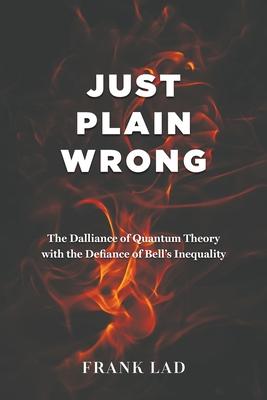The educated public have long been regaled with "the mysteries of quantum physics", which enshroud far-flung claims, e.g. that the moon does not exist when we are not looking at it. These mysteries rely on a stunning proposition of quantum theory arising in the 1960s and contested through the subsequent sixty years: that the probabilities deriving from it defy a mathematical inequality known as Bell’s inequality. John Bell himself, who formulated the problem, was puzzled by this result and mooted that in time we would discover what was wrong with this characterisation of the matter.
In this book, Frank Lad claims to have identified the mathematical error that gives rise to the misunderstanding, and presents it in a form that is accessible to the generally educated reader, especially those familiar with university-level ideas of functions of several variables and the concepts of linear algebra. Understanding of complete mathematical detail is not required for appreciation. Largely ignored and dismissed by the scientific community of professional physicists, here is the background to the result, and the resolution to the controversy.
| FindBook |
有 1 項符合
Just Plain Wrong: The Dalliance of Quantum Theory with the Defiance of Bell’s Inequality的圖書 |
 |
Just Plain Wrong: The Dalliance of Quantum Theory with the Defiance of Bell’s Inequality 作者:Lad 出版社:Austin Macauley 出版日期:2024-05-24 語言:英文 規格:平裝 / 230頁 / 23.39 x 15.6 x 1.22 cm / 普通級/ 初版 |
| 圖書館借閱 |
| 國家圖書館 | 全國圖書書目資訊網 | 國立公共資訊圖書館 | 電子書服務平台 | MetaCat 跨館整合查詢 |
| 臺北市立圖書館 | 新北市立圖書館 | 基隆市公共圖書館 | 桃園市立圖書館 | 新竹縣公共圖書館 |
| 苗栗縣立圖書館 | 臺中市立圖書館 | 彰化縣公共圖書館 | 南投縣文化局 | 雲林縣公共圖書館 |
| 嘉義縣圖書館 | 臺南市立圖書館 | 高雄市立圖書館 | 屏東縣公共圖書館 | 宜蘭縣公共圖書館 |
| 花蓮縣文化局 | 臺東縣文化處 |
|
|
圖書介紹 - 資料來源:博客來 評分:
圖書名稱:Just Plain Wrong: The Dalliance of Quantum Theory with the Defiance of Bell’s Inequality
內容簡介
|











